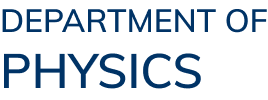Abstract
Illusion refers to the effect of rendering an object indistinguishable from its background or another object to outside observers, thus concealing the original object, enabling devices like invisibility cloak, with theoretical and experimental demonstrations through transformation approach and metamaterials. The opposite side of this effect is to recover the parameters of the original object from the observed data, a process termed inverse imaging. These two sides, hiding and discovering, are generally considered opposing tasks and are thus addressed differently. In this thesis, we explore these two sides under a unified topic from the perspective of the information contained in data. If the observation data capture sufficient information about a system, imaging is possible, while illusion can arise when the observations reveal no information about an object’s real configurations. It is therefore possible to tackle both sides via the same data-driven method based on observation data.
Before diving into the unified data-driven method, we first employ the analytical method, transformation approach, to realize and better understand illusion effect. We achieve illusion effect on curved surfaces in systems governed by Helmholtz equation, through building equivalence between the curvature and isotropic material indices by coordinate mapping. This is experimentally verified in flexural waves, where a curved plate behaves like a flat plate or another curved plate with distinct shape by prescribing thickness variations through our theory.
Then, we propose using the artificial neural network-based machine learning method, variational autoencoder, to tackle both imaging and illusion. The variational autoencoder features compressing the observation data into a highly compact and regular latent space. Such a latent space can be leveraged to evaluate whether the mapping from the observation data to the configurations of physical parameters is unique, through finding the number of degrees of freedom in data. If the mapping is unique, we can achieve inverse imaging, which we demonstrate in the imaging problem with flexural waves to extract material and geometrical parameters by converting the latent variables into their independent representations through independent component analysis. If the mapping is not unique, illusion may occur, since producing the same observation through different physical configurations enables illusionary phenomena. We exploit such non-uniqueness to design thermal illusion devices that disguise an object as background or another object by establishing equivalence between different parameter configurations through measuring the geometrical distance in latent space. Furthermore, this method can be applied to discover physically meaningful quantities from incomplete information about a system in data, and we demonstrate such a case in the discovery of effective permittivity and permeability in layered optical systems from collected electric fields.
The proposed machine learning architecture offers potential for building understanding of complex physical systems from data, opening up opportunities for data-driven discovery of physics. The developed transformation approach can be used to control physical fields on curved surfaces.
